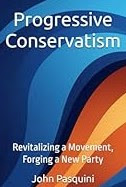The 'Big Beautiful Bill' and Its Potential Impact on Safety Nets
The recent legislative proposal, colloquially dubbed the "Big Beautiful Bill," has sparked considerable debate across the nation. While proponents laud its ambitious scope and promises of economic revitalization, a closer examination reveals potential ramifications for the very safety nets designed to protect the most vulnerable segments of our society. This article explores how certain aspects of this bill could inadvertently, or directly, undermine the foundational pillars of the country's social security, healthcare, and welfare programs.
Understanding the "Safety Net"
Before delving into the specifics of the bill's impact, it's crucial to define what constitutes the "safety net." This term generally refers to a collection of government programs and policies aimed at preventing individuals and families from falling into poverty or experiencing severe hardship. Key components typically include:
Social Security: Providing retirement, disability, and survivor benefits.
Medicare and Medicaid: Offering healthcare coverage to the elderly, disabled, and low-income individuals.
Unemployment Insurance: Temporary financial assistance for those who lose their jobs through no fault of their own.
Food Assistance Programs (e.g., SNAP): Ensuring access to nutritious food for low-income households.
Housing Assistance: Subsidies and programs to help individuals afford safe and stable housing.
Temporary Assistance for Needy Families (TANF): Providing cash assistance and supportive services to needy families.
These programs are vital for economic stability, public health, and social equity, acting as a crucial buffer during economic downturns and personal crises.
Potential Threats from the "Big Beautiful Bill"
While the full text and implications of the "Big Beautiful Bill" are still being analyzed, several common legislative approaches often seen in large-scale bills could pose significant threats to these safety nets:
1. Budgetary Reallocations and Cuts
Large legislative packages often involve significant budgetary shifts. If the "Big Beautiful Bill" prioritizes new spending initiatives or tax cuts without corresponding revenue generation, it could necessitate reallocations from existing programs. This could manifest as:
Direct Cuts: Reductions in funding for Social Security, Medicare, or Medicaid, leading to reduced benefits, stricter eligibility, or higher out-of-pocket costs for recipients.
Stagnant Funding: Even if not direct cuts, failure to increase funding in line with inflation or growing demand effectively diminishes the real value and reach of these programs over time.
Diversion of Funds: Money historically earmarked for social programs might be diverted to new infrastructure projects, defense spending, or other areas deemed priorities by the bill's architects.
Such reallocations could leave millions without adequate support, forcing difficult choices between essential needs like food, housing, and medical care.
2. Regulatory Rollbacks and Deregulation
Some comprehensive bills include provisions for deregulation, ostensibly to stimulate economic growth. However, deregulation can have unintended consequences for safety nets, particularly in areas like environmental protection, labor standards, and consumer safeguards. For instance:
Weakened Worker Protections: Relaxed labor laws could lead to less stable employment, lower wages, and reduced access to benefits, increasing reliance on unemployment insurance and other welfare programs.
Environmental Health Impacts: Deregulation in environmental sectors could disproportionately affect low-income communities, leading to increased health issues and greater strain on public health services and Medicaid.
Consumer Vulnerability: Reduced oversight in financial or housing markets could expose vulnerable populations to predatory practices, leading to financial instability and increased demand for social services.
3. Tax Code Overhauls
Major legislative efforts often include comprehensive changes to the tax code. While tax reform can be beneficial, certain approaches could disproportionately impact the funding mechanisms for safety net programs:
Reduced Revenue Streams: If tax cuts primarily benefit corporations or high-income earners without offsetting revenue, the overall tax base could shrink, leading to less money available for public services, including social programs.
Shifting Tax Burdens: Changes that shift the tax burden more heavily onto middle and lower-income households could reduce their disposable income, making them more reliant on safety nets during times of need.
Impact on Trust Funds: Programs like Social Security and Medicare rely on dedicated payroll taxes. Any changes to these taxes or the overall tax structure that diminish these contributions could jeopardize the long-term solvency of their respective trust funds.
4. Eligibility and Administrative Changes
The "Big Beautiful Bill" might also introduce changes to eligibility criteria or administrative processes for existing programs. These could include:
Stricter Eligibility Requirements: Making it harder for individuals to qualify for benefits, even if they are in genuine need. This could involve stricter income thresholds, asset tests, or work requirements.
Increased Bureaucracy: New administrative hurdles or complex application processes could deter eligible individuals from accessing benefits, effectively reducing the reach of safety nets.
Time Limits on Assistance: Imposing or shortening time limits on certain types of assistance could leave families without support before they achieve self-sufficiency.
Conclusion
While the "Big Beautiful Bill" may aim to address pressing national issues, its potential impact on the country's safety nets warrants careful scrutiny. Any legislative package of this magnitude carries the risk of unintended consequences, particularly for programs that serve as a lifeline for millions. Ensuring the continued strength and accessibility of Social Security, Medicare, Medicaid, and other vital welfare programs must remain a paramount concern. A truly "beautiful" bill would not only foster economic growth but also reinforce the foundational support systems that protect all citizens, especially those who need it most.





